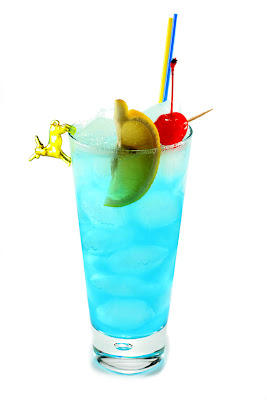The Most Popular Red Grape Varieties
The most popular red grape varieties today are Cabernet
Sauvignon, Merlot, Pinot Noir, Syrah/Shiraz, and Zinfandel. You’ll
encounter these grapes in
varietal
wines and place-name wines. These red grape varieties can also be
blending partners for other grapes, in wines made from multiple grape
varieties.
Cabernet Sauvignon
Cabernet Sauvignon is a noble grape variety that grows well in just
about any climate that isn’t very cool. It became famous through the red
wines of the Médoc district of Bordeaux. Today, California is an
equally important region for Cabernet Sauvignon — not to mention
Washington state, southern France, Italy, Australia, South Africa,
Chile, and Argentina.
The Cabernet Sauvignon grape makes wines that are high in
tannin and are medium- to full-
bodied. The descriptor for Cabernet Sauvignon’s
aroma and flavor is
blackcurrants or
cassis; the grape can also contribute vegetal tones to a wine when or where the grapes are less than ideally ripe.
Because Cabernet Sauvignon is fairly
tannic
(and because of the blending precedent in Bordeaux), winemakers often
blend it with other grapes; usually Merlot — being less tannic — is
considered an ideal partner. Australian winemakers blend Cabernet
Sauvignon with Syrah.
Cabernet Sauvignon often goes by just its first name, Cabernet (although it isn’t the only Cabernet) or even by its nickname, Cab.
Merlot
Deep color, full body, high alcohol, and low tannin are the
characteristics of wines made from the Merlot grape. The aromas and
flavors can be plummy or sometimes chocolatey, or they can suggest tea
leaves.
Some wine drinkers
find
Merlot easier to like than Cabernet Sauvignon because it’s less tannic.
Other winemakers feel that Merlot isn’t satisfactory in its own right,
and thus often blend it with Cabernet Sauvignon, Cabernet Franc, or
both. Merlot makes both inexpensive, simple wines and, when grown in the
right conditions, very serious wines.
Merlot is actually the most-planted grape variety in Bordeaux, where
it excels in the Right Bank districts of Pomerol and St. Emilion. Merlot
is also important in Washington state, California, the Long Island
district of New York, Northeastern Italy, and Chile.
Pinot Noir
The Pinot Noir grape variety is finicky, troublesome, enigmatic, and
challenging. But a great Pinot Noir can be one of the greatest wines
ever. The prototype for Pinot Noir wine is red Burgundy, from France,
where tiny vineyard plots yield rare treasures of wine made entirely
from Pinot Noir. Oregon, California, New Zealand, and
parts
of Australia and Chile also produce good Pinot Noir. Pinot Noir’s
production is limited, because this variety is very particular about
climate and soil.
Pinot Noir wine is lighter in color than Cabernet or Merlot. It has
relatively high alcohol, medium-to-high acidity, and medium-to-low
tannin (although oak barrels can contribute additional tannin to the
wine). Its flavors and aromas can be very
fruity or earthy and woodsy, depending on how it is grown and/or vinified. Pinot Noir is rarely blended with other grapes.
Syrah/Shiraz
The northern part of France’s Rhône Valley is the classic
home
for great wines from the Syrah grape. Rhône wines such as Hermitage and
Côte-Rôtie are the inspiration for Syrah’s dissemination to Australia,
California, Washington state, Italy, and Spain.
Syrah produces deeply colored wines with full body, firm tannin, and
aromas/flavors that can suggest berries, smoked meat, black pepper, tar,
or even burnt rubber (believe it or not). In Australia, Syrah (called
Shiraz) comes in several styles — some of them charming, medium-bodied,
vibrantly fruity wines that are quite the opposite of the Northern
Rhône’s powerful Syrahs.
Syrah doesn’t require any other grape to complement its flavors,
although in Australia it is often blended with Cabernet, and in the
Southern Rhône it is often part of a blended wine with Grenache and
other varieties.
Zinfandel
Zinfandel is one of the oldest grapes in California, and it therefore
enjoys a certain stature there. For decades, wine authorities were
uncertain of its origins. They have finally proven that Zinfandel’s
origin is an obscure Croatian grape.
Zin — as lovers of Zinfandel call it — makes rich, dark wines that
are high in alcohol and medium to high in tannin. They can have a
blackberry or raspberry aroma and flavor, a spicy or tarry character, or
even a jammy flavor. Some Zins are lighter than others and meant to be
enjoyed young, and some are serious wines with a tannin structure that’s
built for aging.




.png)

.png)



